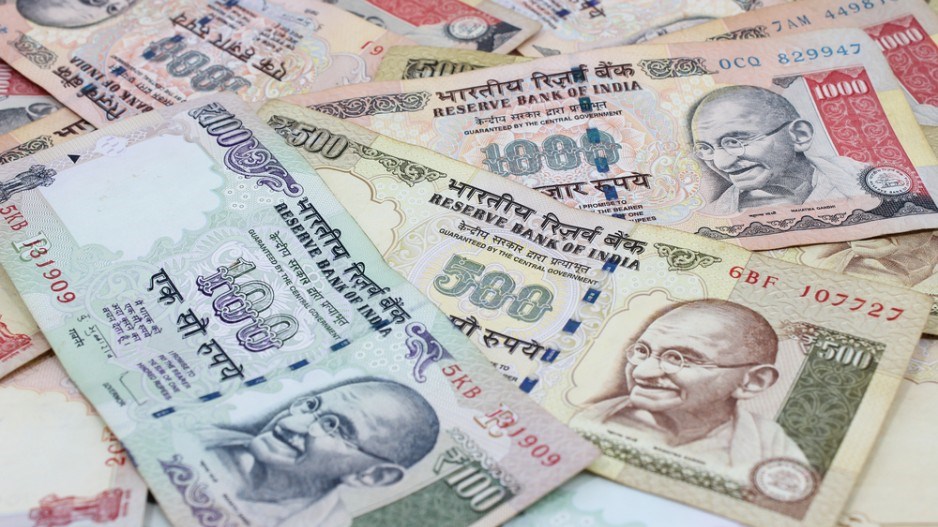On September 1 B.C. raised $98 million with an issue of Indian rupee-- denominated bonds, also known as masala bonds.
The issue bears a 6.62% semi-annual yield and a maturity date of January 9, 2020 (three-year term). The province reinvested the proceeds in another masala bonds issue – that of India’s Housing Development Finance Corp. (HDFC). The province subscribed for five billion Indian rupees ($98 million) of HDFC’s masala bonds. The investment in HDFC’s bonds will yield a semi-annual return of 7.5%, also with a maturity date of January 9, 2020. The financing and subscription are, ostensibly, designed to act as a hedge against foreign exchange risk.
Masala bonds are Indian rupee-denominated bonds issued in offshore capital markets through which issuers can raise money in Indian currency. They are useful for investors who seek exposure to Indian assets but cannot or do not want to engage directly. Because the bonds are listed on stock exchanges (London Stock Exchange for the province’s issue), retail investors as well as large institutions can buy them. The issuance of masala bonds was kicked off in 2014 when the International Finance Corp., a constituent member of the World Bank, issued a 10-year, 10-billion Indian rupee bond to increase foreign investment in India. Since then, the Reserve Bank of India has introduced new rules to reinvigorate the corporate bond market in India and to reduce pressure on bank financing. Under the new rules, an issuer can issue masala bonds worth a maximum of US$750 million a year.
This is not B.C.’s first foray into Asian currency-denominated bonds. The province was the first foreign government to sell dim sum bonds (issued outside of China but denominated in Chinese renminbi) in 2013 and panda bonds (issued outside of China but sold on the mainland) in 2016. But the masala bond issue is important for several reasons.
First, it’s the first time that a Canadian or a foreign government has issued a masala bond, which seems to signal a strong show of faith in the Indian economy. Second, the issue increases Canada’s already substantial investments, estimated to be close to $15 billion in India’s infrastructure sector, and will likely improve trade relations further. Third, it opens up an additional source of capital-raising for the province and other Canadian investors who are keen on tapping Indian markets. Fourth, and more importantly, the masala bond initiative marks a shift in approach because national and international companies have traditionally issued U.S. dollar bonds when dealing with India. B.C.’s masala bond paves the way for the development of the bond market in India.
Reports indicate that a number of Indian companies are gearing up to raise funds from masala bonds issues. Ratings agency Standard & Poor’s expects the masala bonds issue to touch US$5 billion annually over the next two to three years.
A combination of factors has contributed to the current interest in masala bonds as viable alternatives for raising capital. They include the murky global economic outlook dominated by low interest rates and flagging growth in Europe and Japan, lack of credit from Indian banks beset with non-performing assets, the high cost of capital in India and the bonds’ promise of higher returns.
While the province’s issuance is encouraging, and it may pique the interest of other Canadian investors, the long-term success of masala bonds depends on several factors, including a stable Indian currency and satisfaction of niggling issues such as withholding taxes.
Because masala bonds are pegged to India’s currency and settled in U.S. dollars (due to the partial convertibility of the Indian rupee) investors will directly take any hit from exchange rate fluctuation. Here, the province reduced its foreign exchange risk through its subsequent investment in HDFC’s issue. Other investors will likely demand a currency risk premium.
With respect to taxes, while HDFC in its issue agreed to pay the 5% withholding tax due under Indian tax laws (that is generally paid by the investors), it remains to be seen how many other issuers will be willing to bear the extra burden.
For investors who are willing to put their faith in masala bonds, notwithstanding the lingering concerns, recent signs coming from the Indian economy have been fairly positive.
India has one of the world’s fastest-growing economies, and the recent passage of its Goods and Services Tax Bill and other reforms all point toward an upbeat future. •
Amandeep Sandhu is a partner in McMillan LLP’s capital markets group in Vancouver. Ravipal Bains is an associate in McMillan LLP’s capital markets group in Vancouver.




